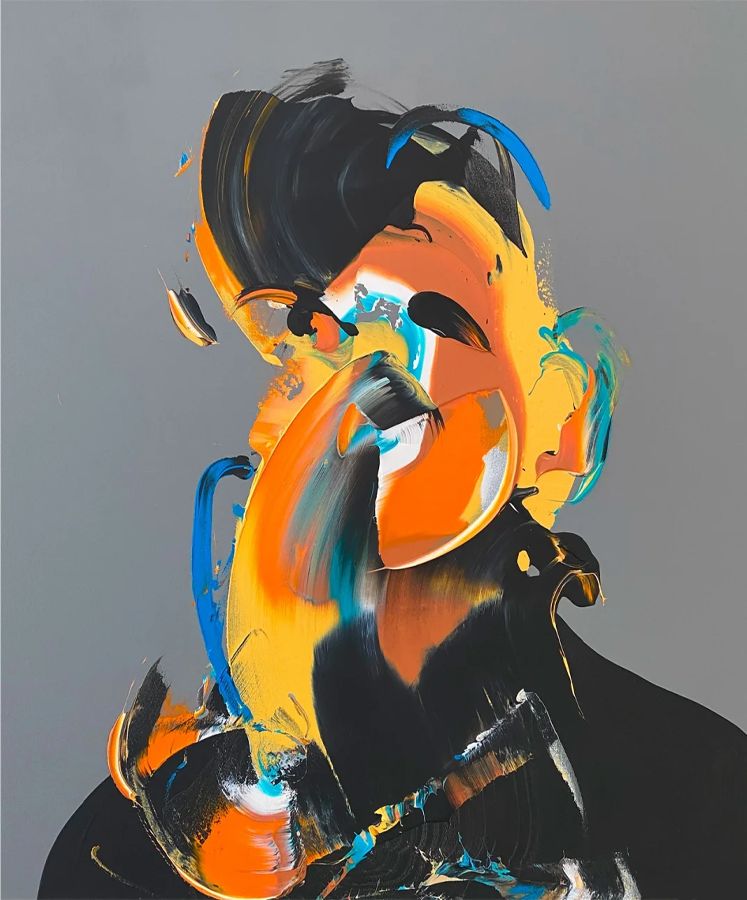Your cart is currently empty!

A Beginner’s Guide to Understanding Abstract Oil Painting: Feel It Before You Paint It
So far on OKarty, we’ve guided you through the joys of painting flowers, sunsets, and beaches — all rooted in the visible world. But today, we’re stepping into a world where reality takes a backseat and emotions, shapes, and colors take the lead: abstract art.
Whether you’re just curious or seriously considering trying abstract oil painting, understanding the essence of abstract art is the first important step. Let’s dive into this fascinating world where imagination reigns and rules are meant to be broken.
🌀 What Is Abstract Art?
Abstract art doesn’t try to replicate what we see in the real world. Instead, it captures what we feel, think, or even dream. It uses colors, lines, textures, and forms in ways that often defy traditional expectations.
You might not “recognize” what’s on the canvas — and that’s totally okay. In fact, that’s kind of the point.
As Wassily Kandinsky, one of the fathers of abstract art, once said:
“Color is a power which directly influences the soul.”
🖼️ A Few World-Famous Abstract Works
To understand abstract oil painting, it’s helpful to look at some iconic pieces:
- “Composition VII” by Wassily Kandinsky
This piece is a storm of color and emotion. There’s no clear object — only pure feeling expressed through shape and motion. - “Broadway Boogie Woogie” by Piet Mondrian
Inspired by New York City and jazz music, Mondrian used only squares and primary colors to express rhythm and energy. - “Woman I” by Willem de Kooning
This oil painting blurs the line between abstract and figurative, using aggressive brushstrokes and distorted shapes to express emotional intensity.
These works show us that abstract art is not about “not knowing how to draw” — it’s about expressing something deeper than what’s visible.
🎯 Key Things to Understand Before Painting Abstract Oil Art
Before you grab a brush and start painting, here are a few things you should know:
1. Start with a feeling, not a photo
Abstract art often begins with an emotion, memory, or even a piece of music. You don’t need a reference image — you need a vibe.
2. Colors are your main characters
In abstract oil painting, colors do the storytelling. Learn how color combinations influence mood. For example, blue might express calm or sadness, while red can scream passion or energy.
3. Composition still matters
Even in abstraction, balance and movement are key. Pay attention to how your elements interact on the canvas — where does the eye go first?
4. Texture adds emotion
Oil paint is perfect for texture. Try using palette knives, thick brush strokes, or even your hands. Texture makes a flat canvas come alive.
5. There’s no wrong answer
The most freeing (and terrifying) part of abstract painting is that there’s no “correct” result. Trust your instincts. What you feel while painting is just as important as what others see.
💡 A Personal Tip from Experience
I remember my first attempt at abstract art — I had no idea what I was doing. I smeared bold reds across the canvas out of frustration. Then added a touch of white. Something clicked. It wasn’t beautiful in a traditional sense, but it felt honest.
Abstract art teaches you to listen to your inner voice. And sometimes, that voice is messy, layered, and wildly colorful.
🎨 Final Thoughts
If you’ve always stuck to painting things you can see — like flowers or sunsets — trying abstract oil painting might feel scary. But that’s also why it’s powerful. It invites you to explore yourself, not just your subject.
Next time, we’ll walk you through how to actually create your own abstract oil painting, step by step. But for now, let this post be your invitation to open your mind and heart to the world of abstraction.
After all, as the artist Paul Klee once said:
“Art does not reproduce the visible; rather, it makes visible.”